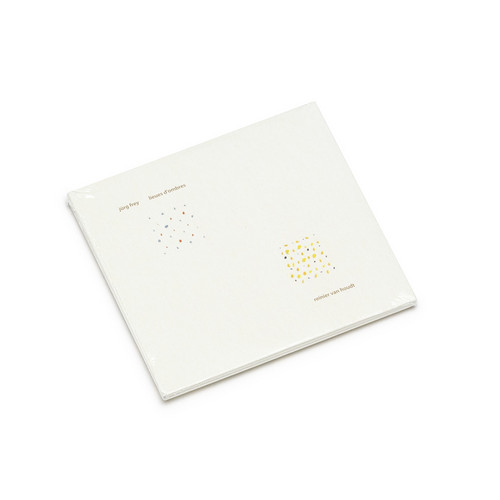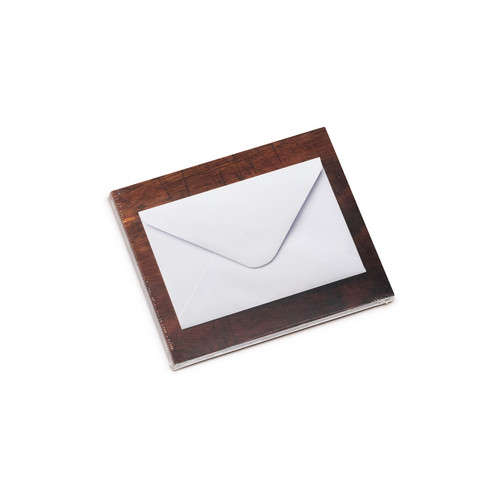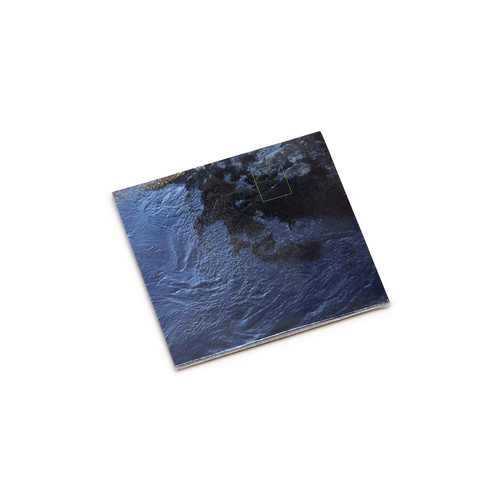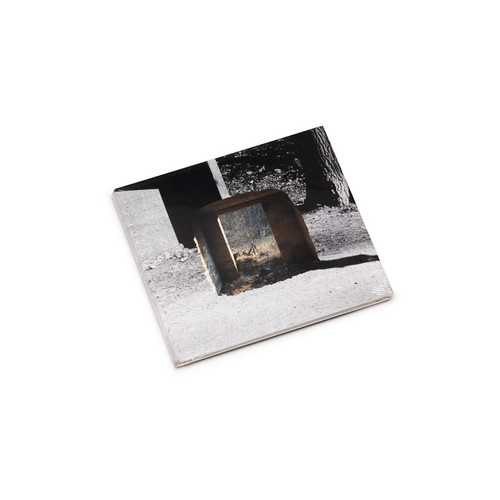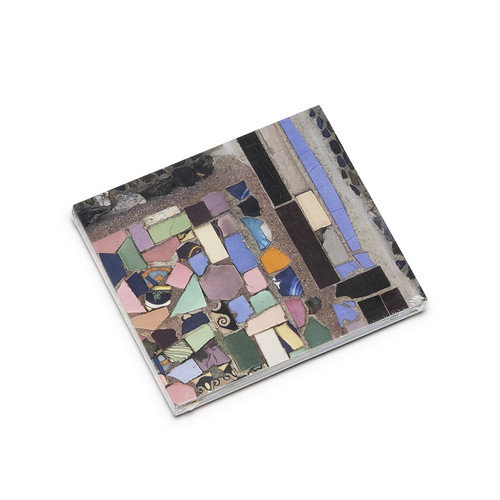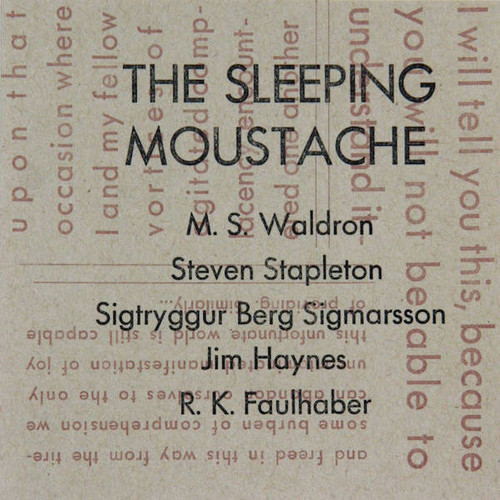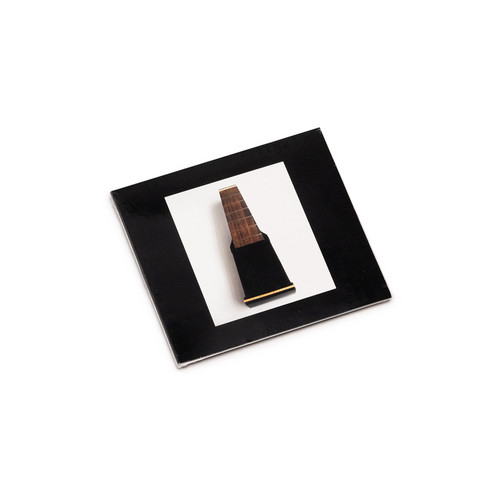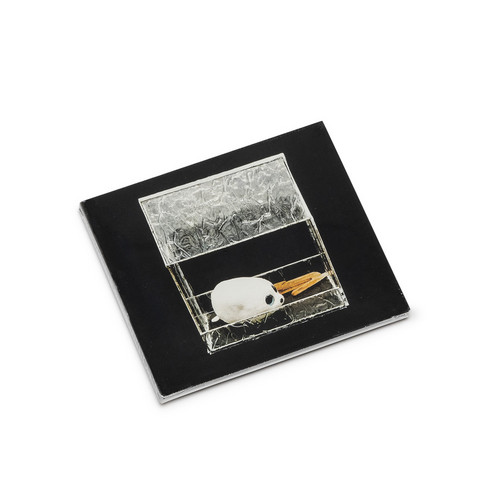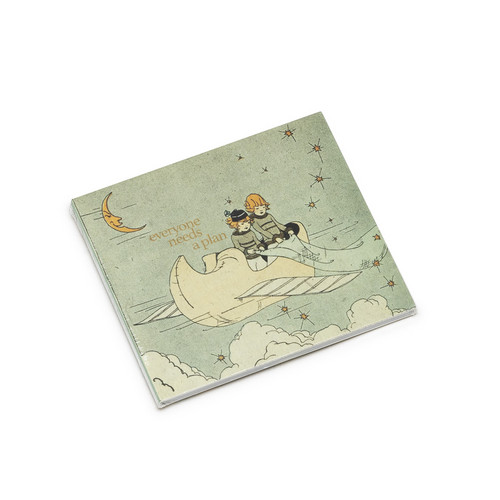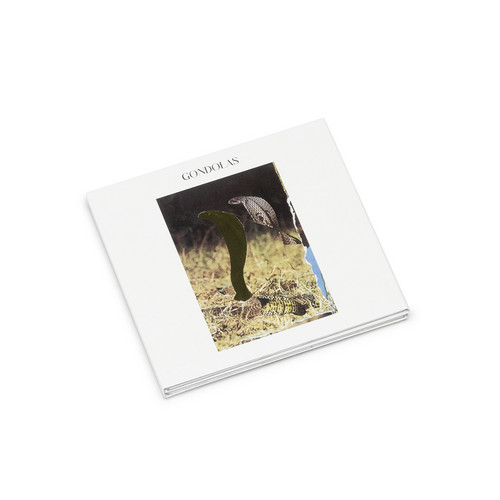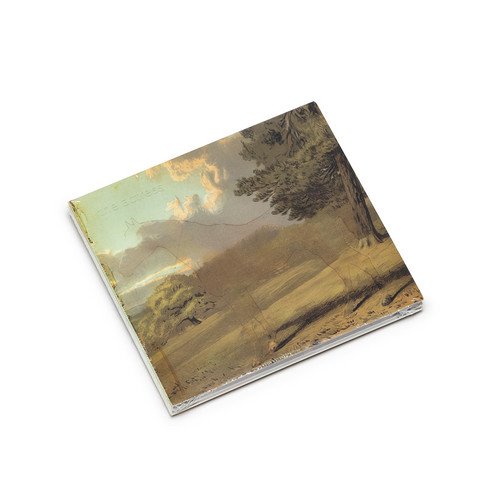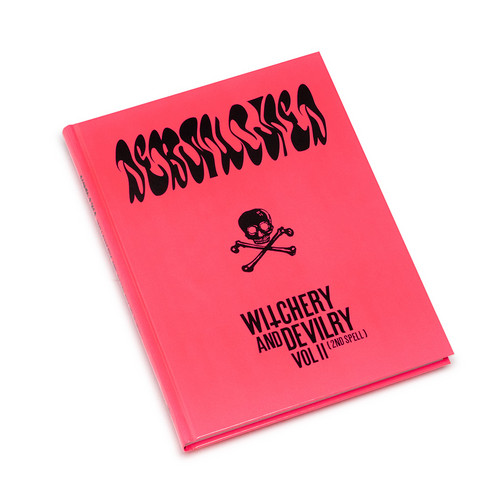Back in stock
Lieues D'Ombres
Swiss composer Jürg Frey and Dutch pianist/composer Reinier van Houdt are reunited on this triple CD, 'lieues d'ombres', after their successful collaboration on 'l'air, l'instant - deux pianos' (elsewhere 014), during which the two built a close rapport.
'lieues d'ombres' contains seven of Frey’s solo piano works, written from 1984 – 2018, including one previously unreleased work, ‘Three Piano Pieces’. All seven pieces were recorded by Micha de Kanter at The Muziekcentrum van de Omroep (MCO) in …
Infinite Ascent
This is French composer/pianist Melaine Dalibert’s fifth solo album since 2015, all featuring his own compositions. This time, the album consists of melodically structured song pieces, an area that Dalibert has been exploring in the last couple of years as a new compositional approach outside his signature algorithmic method of composition. This series of eight short pieces appeal in a new way from his previous music, and shows his maturity as a composer. Dalibert wrote all eight pieces in 2019 …
Katyusha
This isn’t your grandfather’s free jazz. Hell, it probably isn’t free jazz at all, but you have to call it something. “Katyusha” is ballistic fire music that starts where the most berserk, intense free music begins and then sustains that, then pushes it further. Blood vessel bursting intensity, stamina, speed, and momentum is here in blinding quantities, all the while retaining lightning fast interaction. No dull roar, the densities and dynamics do vary, but there is never a dull moment or coast…
The Room Extended
"I first noticed the tremor in Keith Rowe's right hand on a visit to his home in Vallet in the summer of 2014. Presumably it had existed for some time although while I was in Paris (from February 2013) we saw Keith several times a year and I hadn't picked up anything before. When I returned to Vallet in November for two concerts in honor of Christian Wolff's 80th birthday, Wolff at one point asked him directly about the shaking and Keith replied that they were having examinations but it might we…
Post-chance
"The initial idea was that this collaboration should reflect a dialogue between two artists who have not yet met and that it should express something about the gulf between them, both literally and metaphorically. In the exchange of materials and ideas something is inevitably lost along the way – whether it be misunderstandings due to interpretation, language, slippage of meaning or simply things going astray. From the outset we decided to make a feature out of what might be lost in this interch…
Wovenland 3
"Wovenland became a band. But we never do live shows. Our band activities are mainly editing in a studio. Our goal is to focus on acoustic experiments. No more and no less. We have been active for a total of about 10 days, including meetings, in 7 years. We are now disbanding." - Toshiya Tsunoda & Taku Unami
L'âme Est Sans Retenue I
Swiss composer Jürg Frey's six hour long electronic tape piece L'àme Est Sans Retenue I was recorded and assembled in 1997/98 and is now being released for the first time. It is the longest piece Frey has ever composed in his over 40 year career.In this piece, Frey utilized the sounds of field recordings he made in Berlin in 1997 as the source materials, alternately inserted between long stretches of silence. Frey was particularly focusing around that time on how the dynamic relation between sou…
Community
Erstwhile is proud to announce the release of Community, the new solo release by Graham Lambkin, his fifth solo record, following 2011’s Amateur Doubles. “Community is a music steeped in sociological review. It sits as a keen barometer, taking the temperature of the world around it. Community is both willing servant and social mirror - it performs its basic civic duty without fuss, then shatters.” (José Perez)
Mastered by Giuseppe Ielasi and designed by Lambkin, Community arrives in a delux…
sisbiosis
*In process of stocking* Erstwhile presents sisbiosis, collaboration album by Clara de Asís and Ryoko Akama, mastered by Taku Unami. Photography by Clara de Asis (black and white) and Ryoko Akama (color). Six-panel digipak.
Clara de Asís - electronics, percussion, field recordingsRyoko Akama - amplified objects, field recordings
Track 1, 2: recorded and mixed by Clara de Asís in Leymen, France in May 2022
Track 3, 4, 5: materials recorded by Ryoko Akama and Clara de Asís in Leymen, France and Ho…
Revolution Shuffle
Michael Pisaro-Liu's latest work. 106 tracks, one minute each. Six-panel digipak with two discs.
So Long
A journey through time, perhaps, for a daydreamer floating in a small boat amidst the radiant hues of a midnight sun. that daydreamer in this instance is the icelandic artist Sigtryggur Berg Sigmarsson, best known for his electro-surrealism in stilluppsteypa. he has long been an artist of extremes and absurdities -- mania fueled performances, wildly scribbled drawings, and haflerian audio shock-therapy, on one side; and on the other, a profound meditation on austere shape, form, and mood cast th…
The Sleeping Moustache
This curious quintet makes sounds that recall the glory days of Nurse With Wound: long, shapeshifting collages of psychedelic murk interrupted by random outbursts of industrial clatter, nightmarish drones, deeply bizarre audio mutations and tangible masses of sticky audio goop of impossibly vague origin. The Sleeping Moustache consists of five ten-minute tracks interspersed with five brief interstitial tracks. Everything blends together well because nothing blends together well; forced juxtaposi…
Absence
"Friday the 6th of November 2015 was an important day for me. Christian Kobi had invited me to take part in his »zoom in« festival in Bern. Earlier that day I visited the Kunst Museum, looking at the work of Cuno Amiet (1868-1961), recalling the work of an earlier Camille Pissarro, interesting contributions from Felix Vallotton (1835-1925), also an very important exhibition of how photography had influenced Toulouse-Lautrec (1864-1901) called “Lautrec’s Photographic Eye”.
What struck me was how …
The Breadwinner
Graham Lambkin and Jason Lescalleet are editors of the best variety, so recording sound was only half the story. Through tape manipulation and various editing techniques, The Breadwinner falls even closer in line with The Anti-Naturals theory by appropriating the mundane (for aesthetic reasons, of course). The result sounds like an inadvertent exploration of dislocation and displacement, much differently than musique conrète and minimalist compositions or the real-time experiments of, say, nmper…
Strange Skills
The first collaborative work by Choi Joonyong and Devin DiSanto. 6-Panel Digipak with one disc.
Dream Soundies
New upcoming collaboration album for Vanessa Rossetto and Moniek Darge on Erstwhile Records.
Everyone Needs a Plan
Uncertainties for uncertainty, as steadfast as the Pillars of Hercules, Everyone Needs a Plan glides and crackles. As canny and crafty as ever, Matthew Revert and Vanessa Rossetto move through — move through what? No, they push through, emerge from, insinuate into contingencies. Contingencies link hands with compositions, with foundling sounds, static, and babble. The skin of atmosphere is stretched taut and made permeable to all species of sound: a moan, a pluck, a bowed string, a refrigerator …
Gondolas
Erstwhile Records announces ’Gondolas‘ by Graham Lambkin and James Rushford. Two very unique voices, two hours of sonic magic.
The Actress
Erstwhile presents The Actress, Vanessa Rossetto's solo album. Mastered by Giuseppe Ielasi, designed by Matthew Revert. Double CD, six-panel digipak.
Debauched: Witchery and Devilry Vol. 2 (2nd Spell) Book
**Massive 288 pages deluxe, hard cover** A whirling, twirling, panorama of satanic sleaze! The Return…. The 2nd Coming…the long-awaited next dose is finally unleashed and ready to melt minds and devour souls. During the height of the turned-on 1960s and 70s Occult explosion even the under the counter adult men’s magazines got in on the act and began a surreal exploration of the haunting netherworld of Witchcraft and Satanism. This monumental art book reveals a world of diabolical smut that was s…
